#scicom
Text
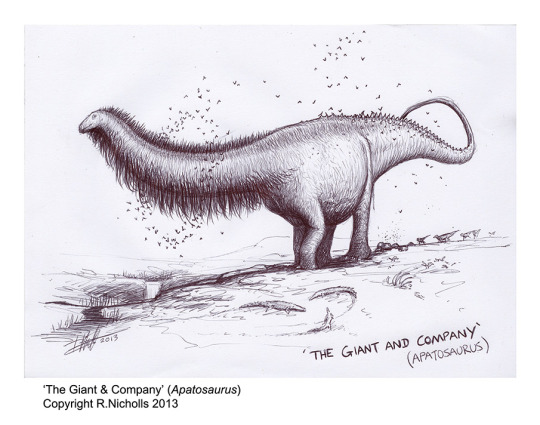

The biggest beard and sideburns in Earth's history (speculative).
#Art#Painting#PaleoArt#PalaeoArt#SciArt#SciCom#DigitalArt#Illustration#Dinosaurs#Birds#Reptiles#Palaeontology#Paleontology
2K notes
·
View notes
Text

Three days ago our paper about the history and impact of paleo topics in comics come out! In this richly illustrated publication we try to show how this specific art form can be utilized in #scicom

Dinosaurs have a long history in comics and like paleoart was influenced by paleontology so were comincs by paleoart. Resulting in many cases of - what we would now call - plagiarism but also a popularization of paleontological subjects...

A big plus for comics is their ability to weave scientific content into a narrative. Without being specifically educational they can introduce people to new concept and looks of deep time...

We can only scratch the surface here but as people who listened to Iacovos Le Du's #paleostreamcon talk will know: narratives and emotions are important and we sense an untapped potential here that thankfully is slowly being explored. We show several old and also very new examples!
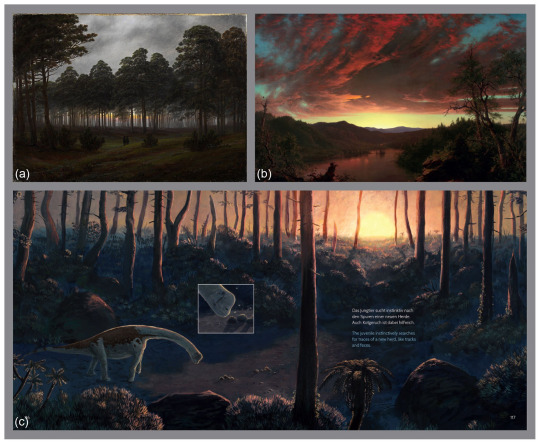
In the second part of our paper we look at how comics can do this, using our very own product, the Europasaurus graphic novel. We show what work influenced us, how we structured the book and how we balanced story and scientific content.
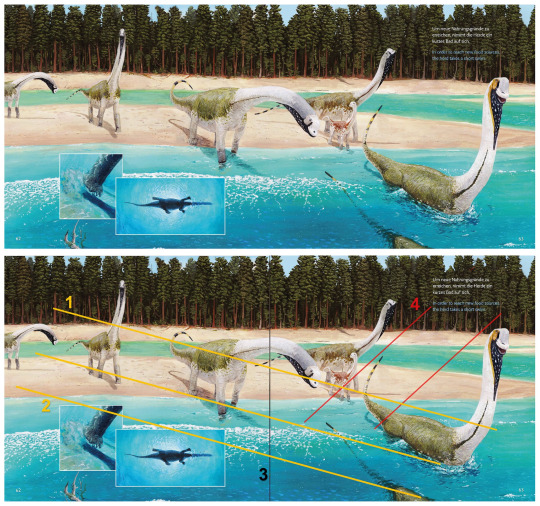
We also go into compositions and how we tell stories with relatively few panels, to guide the eye and inform the reader about what's going on

This also gives you a good look at our actual process that involved weekly Skype calls and lots of doodling but I think the composition of our team was also important. ;)
We end with thoughts and ideas on outreach, providing examples like our animated book chapters and exhibitions we organized or took part in.
youtube
Our paper is open access and can be found on Geoscience communications
#paleoart#sciart#paleostream#palaeoblr#dinosaur#dinosaurs#jurassic#sauropod#comic#scicom#scicomm#graphic novel#europasaurus#Youtube
205 notes
·
View notes
Text








Studying into the evening means leaving campus after sundown when the world has transformed into a different spirit.
The course structure has many small deadlines and exams throughout the months of the season. So far I’ve graded above the curve but I can’t help but wish to be sitting at a higher percentile.
There are moments when I feel a bewitching desire to delve deeper, do better, experience more, and I’ll sit studiously over my textbooks. Then I stumble onto a poorly phrased line or the author skips over a step that would’ve been clarifying on how he came to his conclusion. As someone with an interest in science communication, taking introductory level science courses is as much to observe how the science is introduced as much as to learn it for myself.
Thank you for being here, enjoy your day. I intend to.
#eurydike’s#dark academia#night academia#nighttime#night photography#academia#studyblr#UW#PNW#Seattle#photography#academics#university#college#physics#chemistry#science#science communication#scicom#street lamp#cat#black cat#Ninth House#leigh bardugo#Hell Bent#books#city#night city
58 notes
·
View notes
Text
How to Identify Cross Orbweaver Spiders
Originally posted on my website at https://rebeccalexa.com/how-to-identify-cross-orbweaver-spiders/. Click here to learn more about the How to Identify article series.
Name: Cross orbweaver spider (Araneus diadematus), also known as cross spider, European garden spider, et. al.
Range and typical habitat(s): Native to much of Europe, sporadically found in temperate areas of Asia, introduced to North America, particularly the west coast and northeast United States.
Distinguishing physical characteristics (size, colors, overall shapes, detail shapes) and behaviors: Fall is just around the corner, and if you’re looking for more eco-friendly seasonal decorations, the cross orbweaver is the perfect fit! While these spiders have spent all summer chowing down on insects, by September they’ve gotten big enough to be quite visible on their large orb webs.

A mature female cross orbweaver spider.
Both sexes are a variable combination of orange, yellow, brown, and/or gray, and they all have white cross-shaped markings on the dorsal (upper) side of their rather large, oval-shaped abdomens. The legs are tan to orange with darker brown or gray stripes. Like many other web-weaving spiders, cross orbweavers tend to rest in the center of their web with their head facing down and their legs flexed rather than straight, though the fourth pair in the back may sometimes be extended somewhat. Their legs are covered in fine hairs with a fuzzy appearance. They are also known to perch on nearby leaves and twigs.
Like other members of the family Araneidae, the orb-weavers, these spiders have four pairs of eyes. Females are larger than males, reaching up to 1″ long in exceptional individuals, while males usually top out at 1/2″ or less. A close examination shows that males can also be distinguished by large pedipalps with swollen ends. These are little appendages nestled between the chelicerae (jaws) and the first pair of legs. Males use the pedipalps in mating displays, and to also pass sperm to the female. A courting male needs to be careful, as females will engage in cannibalism.
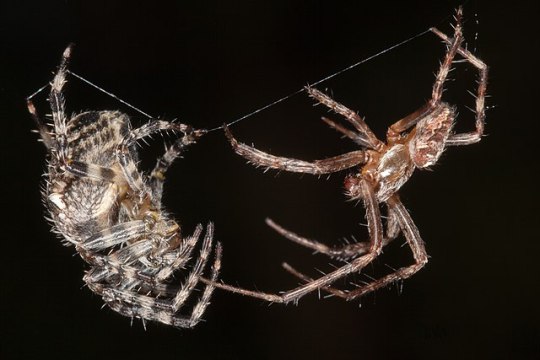
A male cross orbweaver (right) carefully approaches a female (left) with the intent to mate.
The eggs laid by females the previous fall hatch in spring, releasing several dozen (or more!) tiny yellow spiderlings into the world. While they make webs as soon as they find a good location, these young spiders often end up as prey for other animals themselves. Cross orbweavers generally live no more than a year, though females die shortly after laying their eggs, and males are often eaten by their mates.
The web is made of a series of overlapping threads of silk like the spokes in a wheel, with a spiraling orb starting at the center and working its way outward. A cross orbweaver’s web may be quite large, and the central orb may at times exceed two feet in diameter. They are not picky about where they set up shop, and are often found near homes and other buildings, where they are quite adept at catching flying insects that blunder into the web. If threatened, these spiders shake their web vigorously, and are not prone to bite unless handled roughly. They may dry bite in self-defense, choosing not to use venom. Their venom is not considered dangerous to humans.

Other organisms it could be confused with and how to tell the difference: There are several other Araneus species that look quite similar to the cross orbweaver. Of these, the most similar is the four-spot orbweaver (Araneus quadratus) has less variegated orange, green, or brown abdomen with four small white spots on it rather than a cross, though they have similarly striped legs. It is found only in Europe.
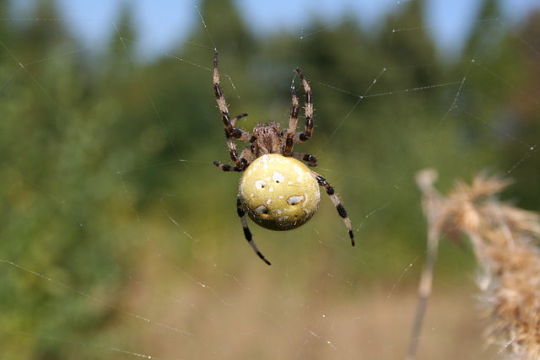
Araneus quadratus
The cat-faced spider (Araneus gemmoides), also known as the jewel orbweaver, is of similar size and color variation to the cross orbweaver. However, its abdomen has two pronounced points on top that look rather like a cat’s ears. Araneus gemma (not pictured) is also sometimes called the cat-faced spider or the gem-shaped spider, and it has a similarly shaped abdomen but tends to be paler in color. Both of these species are primarily found in the western half of temperate North America.

Araneus gemmoides. By Trucmuche04, CCA-SA-3.0
Anything else worth mentioning? Because the cross orbweaver is not native to North America, it competes with native spiders for food. This is especially concerning as insect populations have plummeted in recent decades due to pesticide use and habitat loss. It is often found in urban areas and other places with lots of human habitation, and is considered an invasive species in the Bay Area. They are considered harmless to humans.
Further Reading:
Cross Orbweaver Spider
Cross Orbweaver
Cross Orbweaver (Araneus diadematus)
Spiderspotter: Cross Orbweaver
Did you enjoy this post? Consider taking one of my online foraging and natural history classes or hiring me for a guided nature tour, checking out my other articles, or picking up a paperback or ebook I’ve written! You can even buy me a coffee here!
#spider#spiders#cw spiders#spider tw#cross orbweaver#orb weaver#arachnids#arthropods#invertebrates#bugs#wildlife#animals#wild animals#nature#nature identification#invasive species#biodiversity#science#scicom
52 notes
·
View notes
Quote
Science is a way to call the bluff of those who only pretend to knowledge… It can tell us when we’re being lied to. It provides a mid-course correction to our mistakes.
Carl Sagan, who would have been 88 today, on science as an instrument of democracy.
280 notes
·
View notes
Text

Guess who found a job doing science communication? Turns out I'm pretty good at info dumping on people.
4 notes
·
View notes
Photo

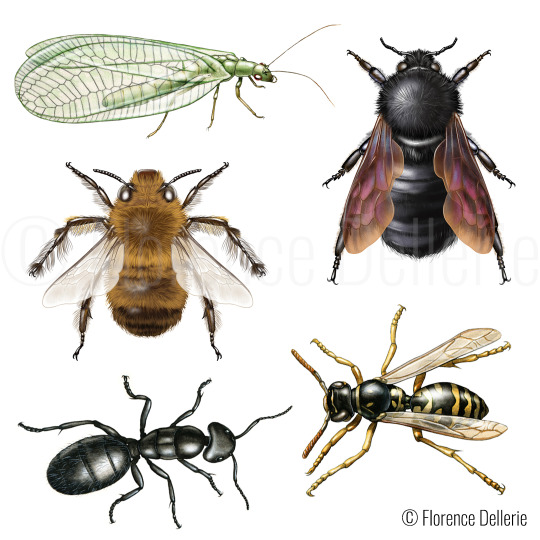
♥ J'ai le plaisir de vous annoncer que mes illustrations entomologiques seront présentées au public lors de l'exposition "Les insectes pollinisateurs font le buzz - Influenceurs de nature" (j'aime beaucoup ce titre ^^) !
► À découvrir du 8 avril au 31 décembre au Jardin de l'Arquebuse (Planétarium) à Dijon. Je vous en reparlerai très bientôt. :)
Insectes visibles sur l'illustration :
• Chrysopa pallens
• Xylocopa violacea
• Antophora plumipes
• Camponotus vagus
• Polistes gallicus
#Dijon#exposition#pollinisateurs#pollinisation#nature#insectes#biodiversité#illustration#Florence Dellerie#scicom#SciArt#sciences#entomologie#animaux#art#artwork
2 notes
·
View notes
Photo



In our latest Antarctic Log post, artist Karen Romano Young is wishing everyone a happy new year (vicariously) from the South Pole! https://blogs.agu.org/sciencecommunication/2023/01/06/antarcticlog-happy-new-year-3/
2 notes
·
View notes
Text
I'm still steamed over the whole EDGE is a plagiarist thing. Just offended that somebody thought they could continue to get away with that in SCICOM esp AFTER the Hbomber guy video dropped.
0 notes
Text
Properties of alcohols

Explain the structure, and properties of alcohols, ethers, and carbolic acids. Discuss the reactivity of alcohols with the Lucas reagent. List several examples of chemical reactions in alcohols and ethers. You can also use alcohols as catalysts for other chemical reactions.
You can use ethanol as:
- a fuel
- solvent in an engine
The structure and properties of alcohols
The main differences between a phenol and an the properties of alcohols lie in their chemical structures. While phenols are colorless liquids at normal temperatures, ethers are waxy solids. They turn reddish brown when exposed to air. Both alcohols and ethers have the same molecular weight, but the differences between them are not insignificant.
One major difference between a phenol and an ether is the structure of the hydroxyl group. The hydroxyl group of a phenol attaches directly to the aromatic ring carbon atom. In an ether, however, the hydroxyl group attaches to a saturated carbon atom, whereas in an alcohol, the hydroxyl group is attached to the alkoxyl group. Alcohols are acidic in water, but ethers are non-acidic. Potassium permanganate is used to oxidize alcohols.
Alcohols and phenols are organic compounds with distinctive chemical and physical properties. Their sweetness and sweet odor are the most prominent features of these substances. Alcohols and ethers are used in various chemical processes, but their acidic nature makes them toxic when ingested. The hydroxyl group is an acidic compound, while thiols are less acidic.
Alcohols are categorized as primary, secondary, and tertiary. The classification of these substances depends on the number of alkyl groups attached to the carbon atom. Primary alcohols are called ethanol. Secondary alcohols include rubbing alcohol, which contains two alkyl groups on the carbon atom. Tertiary alcohols include tert-butyl alcohol, 2-methyl-2-propanol, and isopropyl alcohol.
Chemical properties of primary alcohols with the Lucas reagent

The Lucas reagent is highly corrosive and acidic. If properties of alcohols are tested in it, a new organic layer (RCl) will form on top after five minutes. Secondary alcohols (like 2-methylpropane-2-ol) react with HBr more slowly than tertiary alcohols. The main difference between the two is the nature of the carbon atoms on the molecules of the tertiary alcohols.
When a sample is tested in the LUCAS test, a small amount of the sample is added to the test tube. The result of this test will tell you if the sample is primary or secondary. The reaction occurs immediately in the presence of HCl, as tertiary alcohols react faster than secondary alcohols. The turbidity of the sample is evidence of a Lucas reaction.
What is the nature of the hydroxyl group in alcohols? The hydroxyl group is the most reactive site on alcohol molecules. Alcohols have a dissociation constant of 1016. This value is higher than the C-H bond strength. Moreover, they are dipolar. This means that they are stronger than alkanes and nearly twice as strong as ethers.
The carbonium atoms in acid-catalyzed reactions act as intermediates. This is the reason why alcohols with three degrees of reactivity are more reactive than those of two degrees. They are also more reactive than one degree, and this is how they convert into alkenes. You can choose from an example of each reaction and it will show up in the same space.
Using the Lucas reagent, students can determine which type of alcohol is more reactive. The lower the molecular weight alcohols will react with the acid, the more alkenes will form. Higher molecular weight alcohols will not react with acid, but they may be insoluble in a weakly basic solution. It is important to remember that higher temperatures are required to dehydrate alcohols.
Describe the reactivity of ethers with the Lucas reagent

Reactivity is the rate of change in a substance from colorless to colored. The reactivity of properties of alcohols, phenol and ethers can be determined by performing a Lucas test using anhydrous zinc chloride in concentrated hydrochloric acid. This reagent is a good indicator of the reactivity of different alcohols, as it measures the time it takes for a clear solution to change to a turbid solution. The turbidity in the solution indicates the presence of chloroalkanes.
The Lucas reagent is useful for identifying alcohols that undergo the SN1 reaction. The reagent, which consists of zinc chloride and hydrochloric acid, causes alcohols to decompose into corresponding halides at varying rates. The rate of the reaction depends on the stability of the alcohols under the reaction. Secondary alcohols undergo the reaction more quickly than simple primary alcohols, such as ethanol or methyethanol.
The reactivity of alcohols depends on the presence of a hydroxyl group. For example, diethyl ether is flammable and highly volatile. Benzaldehyde forms a carbon-carbon bond. The Lucas reagent can also be used to oxidize other organic substances, such as ketone. Moreover, alcohols and ethers can also react with aldehydes and ketone, and this reaction is used in the production of biodiesel, among others.
Identify and differentiate between the reactivity of alcohol phenol and the reactivity of phenols with the Lucas reagent. Alcohols can be classified as weak acids or strong acids. They have high dissociation constants and can be categorized into primary, secondary, or tertiary alcohols. The Lucas reagent has the highest reactivity in alcohols.
Describe the chemical reactions in alcohols

Aldehydes and ethers are polar compounds. They are formed when oxygen interacts with another substance. The oxygen atom in alcohol is more electronegative than carbon and hydrogen atoms, making it a proton acceptor. This reaction also forms a new bond between the oxygen and carbon, resulting in a more stable compound. The oxygen atom is a nucleophile, which means that it attacks the carbonyl group in an aldehyde or ketone. This reaction is the basis for the formation of a new product.
Alcohol and phenol are organic compounds with a hydroxyl group attached to an aromatic ring. They differ from alkyl halides in their reactivity. Alkyl halides can undergo nucleophilic substitution and elimination reactions, while phenols are rarer. An alcohol with a phenolic hydroxyl group is oxidized easily to produce a carboxylic acid.
Halogenation of ether in dark conditions is the major reason why phenols become halogenated. The presence of halogens in the dark causes phenols to turn red. Another reaction that occurs in phenol is the electrophilic substitution reaction. The presence of an alkoxy group (-OR) in phenol activates the aromatic ring. Lastly, the hydroxyl group in phenol bonds to the carbon atom directly.
Describe the chemical reactions in alcohol phenol, ethers, and methanol
Describe the reactivity of phenols with the Lucas reagent
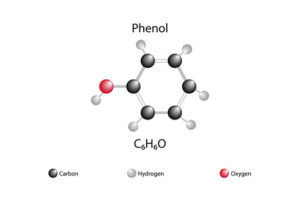
The Lucas reagent is a useful tool in the recognition of alcohols that undergo rapid SN1 reactions. ZnCl2 dissolved in HCl is capable of converting different types of alcohols into their corresponding halides. The rate of conversion is a reflection of the reactivity of the alcohol, as it varies with the type of alcohol in question. For example, benzyl alcohols react much faster than allyl alcohols do. The first sign that a given alcohol is being converted is the solution becoming cloudy.
The OH group on a phenol's ring acts as the nucleophile in this reaction. As a result, it is very difficult for an X-ion to cleave the phenol. However, alkenes are readily brominated by the same reaction. Using the Lucas reagent to study alcohol phenol and ethers allows you to identify which type of alcohol is the best to use.
Using the Lucas reagent, a solution of anhydrous zinc chloride and concentrated hydrochloric acid is mixed to identify a range of different alcohols. HCl and ZnCl2 are equimolar, and the reactivity of each alcohol depends on the amount of zinc. For example, primary alcohols do not react readily with the reagent at room temperature. But tertiary alcohols react much more quickly, and the solution becomes turbid. The turbidity of the solution indicates chloroalkane formation.
To determine which alcohol is more reactive than another, use the Lucas reagent. Alcohols are weak acids that react with a strong base. Sodium is a base, and sodium reacts strongly with alcohol. Hence, sodium increases the alcohol's activity toward it. So, sodium is a strong base. When the Lucas reagent is used to measure the reactivity of alcohols, the reactivity of sodium increases.
https://www.youtube.com/watch?v=WxZLrSY0dRE
Read the full article
0 notes
Text
in my heart of heart Tony has definitely hosted a PBS NOVA documentary episode or series of episodes. hed be so good at it.
23 notes
·
View notes
Text

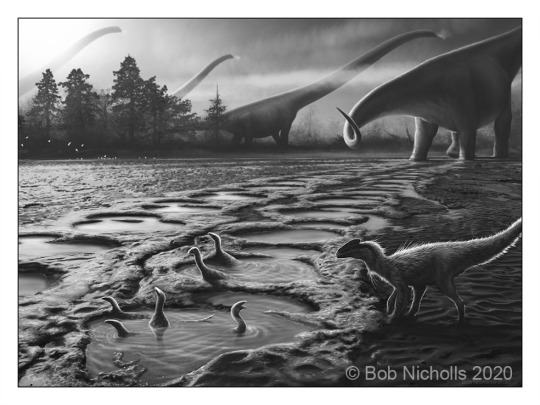
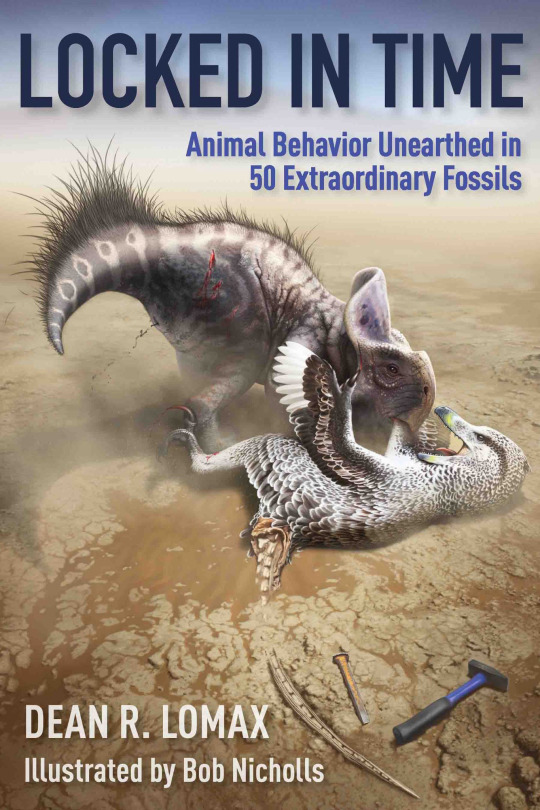
Today's random portfolio artwork post is "In the Wake of Colossus," one of my paintings from Locked in Time, written by Dr Dean Lomax - Palaeontologist and published by Columbia University Press (the colour version is from the Korean translation). Featured are a passing herd of Mamenchisaurus, the tyrannosaur Guanlong, and some unfortunate Limusaurus stuck in the mud. There is fossil evidence for this – check out the book!
#Art#Painting#PaleoArt#PalaeoArt#SciArt#SciCom#DigitalArt#Illustration#Dinosaurs#Birds#Reptiles#Palaeontology#Paleontology
459 notes
·
View notes
Text
if theres anything i want to migrate from twitter to tumblr its like....all the fun scientists i followed and the tags
like birds vs fish and Worm Wednesday and Sunday Fish Sketch or whatever
#toy txt post#some very specific scicom and personal twitter accs of scientists that i wish would come here isntead of just#ig and tiktok. i cant follow you those places....i can follow u on ig but i wont see shit.....#come here worm wednesday would be so good on tumblr...#birds vs fish is perfect for us....#one guy had his own website but then i went to bookmark it when el9n first bought twitter and it was gone???? ;-;#edit: HIS BLOG IS BACK okay nice
1 note
·
View note
Text
the youtube recommendation algorithm sucks so much ass it is unbelievable how they have fucked up what used to be a completely average recommendation mode imo
#i watched a video on science com and string theory from a channel i've never seen before#bc im interested in scicom#and suddenly my feed is dominated by their other physics videos??#it's like the meme of 'you said you liked ponies once when u were 5 so now ur grandma gets u pony merch forever'#meanwhile i always need to search for the latest snapcube episode
1 note
·
View note
Note
So I need to move and an interesting opportunity has presented itself; a beautifully finished and generously sized houseboat. I've been doing some reading, and know to expect maintenance costs and mooring costs (with council tax if I stay in the same place) but as you lived on a boat once I wanted to ask a specific question for the sake of my pets. How hard is it to keep the boat warm in the winter and cool in the summer? Too warm is less of a problem but one of my cats doesn't tolerate heat well. Too cold is scary because I've got a lot of little eight legged fuzzy friends who won't appreciate that.
Also if you have any words of wisdom please don't hesitate to share. I've not committed in anyway yet; I'm just in the stage of researching and considering. But I have to admit being a moveable animal exhibit sounds really appealing; I've been really wanting to do some outreach and scicom with my tarantulas and this seems like a potential opportunity to do so.

A winter's scene in the cabin of my boat, Eve, on the canal in Wiltshire. The stove's going, the firewood's piled high, and there's whiskey and poetry. "It must be cold in the winter" say people who couldn't really be more wrong!
Artist Dru Marland, on the listing of this holiday card
People always ask/assume this, to the point where old boaters aren’t polite about answering any more. However, a well-insulated narrow steel tube with a multifuel stove in it is extremely easy to warm up. They are also very easy to air out, or cool down: you open a window on either side.
Sometimes you might wake up to ice on the inside of the windows, but the trick is to learn how to bank a stove overnight, which is quickly learned and a good life skill to have.
Our boat actually had an Eberspacher, a magnificently rare and antiquated form of central heating for vehicles that ran on diesel and made a tremendous fuss of it. You do not need an Eberspacher, but if your prospective boat has one, it is a very fun way to answer the question. “Doesn’t it get VERY cold in winter?” And you look blank and say reproachfully, “she has central heating…”
As for whether the boat you want has good insulation - try to visit it and see if it feels cold/damp. The listing or the owner should be able to describe the insulation. sprayfoam insulation is best, and if you see that you can be fairly confident.
Windows can get cold, but depending on what you have, there will be different treatments. Round porthole windows are usually fitted with round pillow things that you stick in, blinds can be made with thermal linings, and so on.
In general, the climate of a well-fitted boat is easier to control than a house. but you’re welcome to message me privately with the listing if you have more questions.
195 notes
·
View notes
Text
*reveals information about myself that i've literally openly talked about several times as a matter of what was essentially scicom work* oh no what if im. perceived.
17 notes
·
View notes